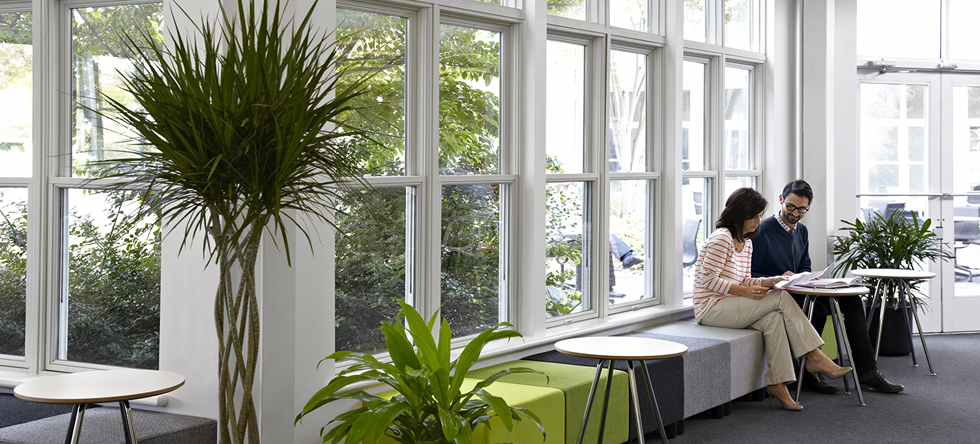How Nature-Mimicking Design Helps Us

New research shows that connecting with nature literally rejuvenates our brains. Clearly John Keats was onto something back in 1817 when he wrote, “Oh, ye! who have your eyeballs vexed and tired/Feast them upon the wideness of the Sea.”
Attention restoration theory (ART) helps explain why our brains find nature so refreshing. Our attention comes in two “flavors”—involuntary (something interesting captures our attention) and voluntary (we focus our attention on completing a task). “Nature, which is filled with intriguing stimuli, modestly grabs attention in a bottom-up fashion, allowing top-down directed-attention abilities a chance to replenish,” say researchers at the University of Michigan.
Office workers who suffer “eyeballs vexed and tired” on a daily basis may need that replenishing the most. That’s why for years Herman Miller has thought about how design can mimic the rejuvenating characteristics of nature indoors. We believe that biophilic design—bringing elements of nature into the environment in different ways, including architecturally—can also be restorative.
It’s the logical next step in the green design movement, says Betty Hase, Advanced Knowledge + Applications lead at Herman Miller, in a new research summary: “You can design a totally sustainable building that meets all the LEED standards but ignores the deep human need for contact with nature. What’s really powerful is if you can do both—create energy-efficient spaces that also incorporate natural features that help people feel comfortable and inspired, really alive and engaged in the places where they work, learn, and heal.”
Company Informations:
Le Office Furniture Manufacturer
www.letbackrest.com
Address: No.12, Nanhua Road, LongJiang ,Shunde,Foshan, Guangdong, China (Mainland)
Email: sale@letbackrest.com
skype: kinmai2008

